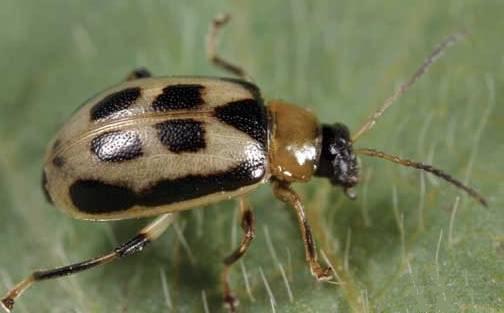 I went out this morning to one of cooperator's pumpkin fields with the piece of equipment above to collect bees during their morning rounds at pumpkin flowers. The "aftsman" was fashioned from a handheld shop vacuum by an inventive man out in California. It works really well, but those squash bees are incredibly fast, and my reaction time needed honing! You wouldn't believe it, but the squash bees are also incredibly loud; much louder than bumblebees. If I closed my eyes it sounded like I was at a miniature raceway. It was 6 AM, and closing my eyes on the job wasn't a good idea. Thank goodness for their ruckus!
I went out this morning to one of cooperator's pumpkin fields with the piece of equipment above to collect bees during their morning rounds at pumpkin flowers. The "aftsman" was fashioned from a handheld shop vacuum by an inventive man out in California. It works really well, but those squash bees are incredibly fast, and my reaction time needed honing! You wouldn't believe it, but the squash bees are also incredibly loud; much louder than bumblebees. If I closed my eyes it sounded like I was at a miniature raceway. It was 6 AM, and closing my eyes on the job wasn't a good idea. Thank goodness for their ruckus!I also stopped by my 2010 field site today to discover the very first male flowers of the season. Other than the striped cucumber beetles, I felt like I was the first one to witness their bloom. No pollinators had yet discovered the tasty treat hidden under the large leaves. In a couple of weeks female buds will begin to bloom, and my experiment will be underway.
Enjoy the weekend!






























